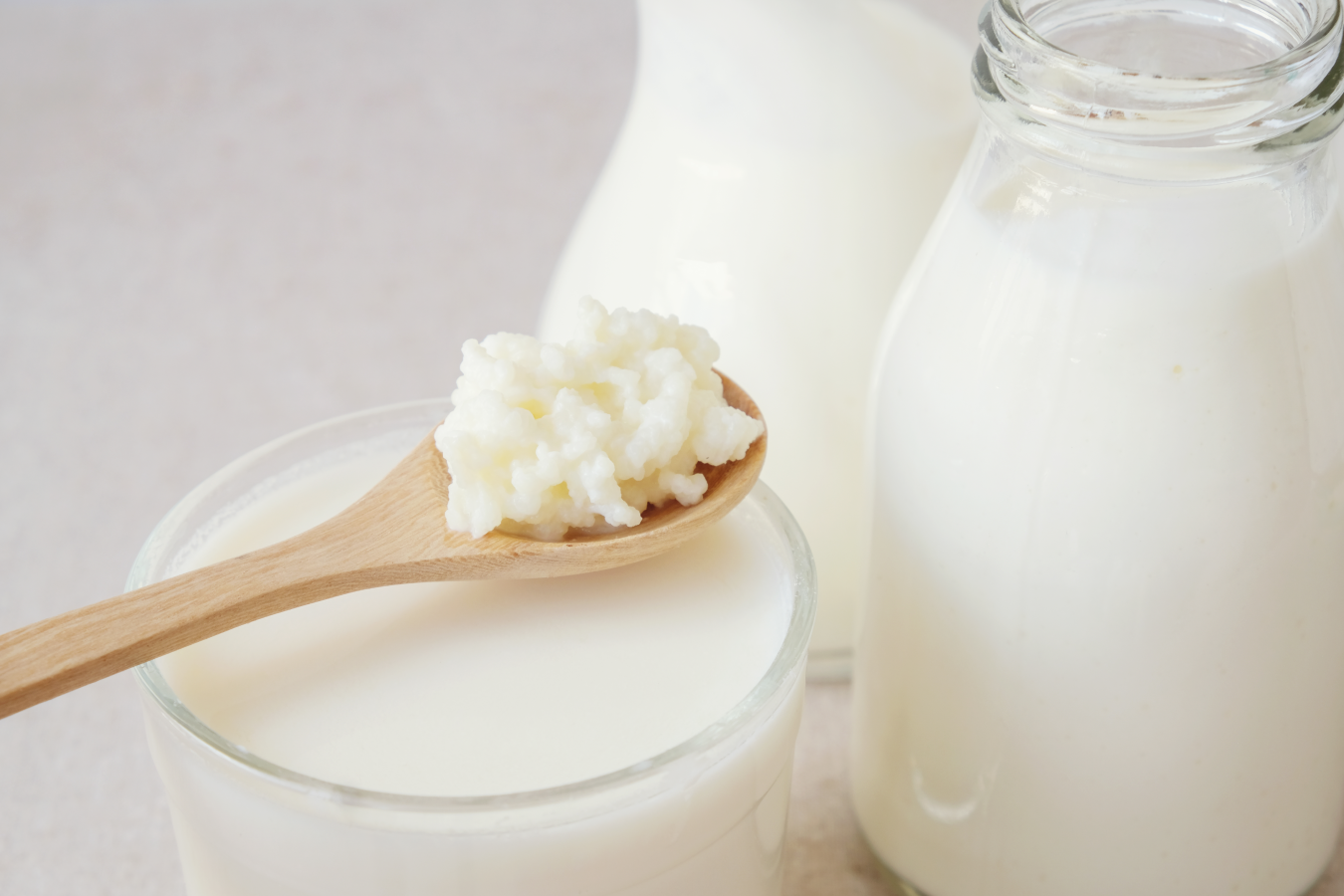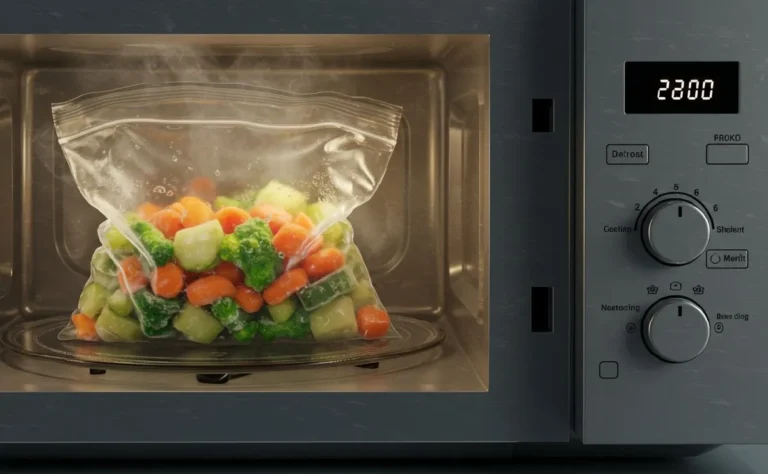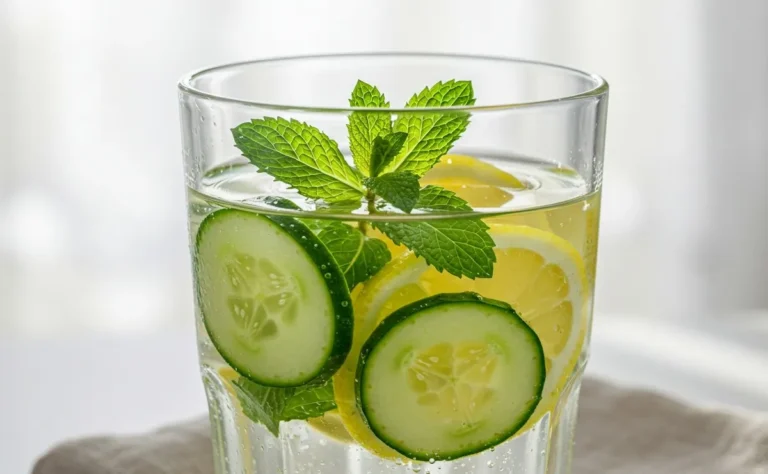Kefir, whose etymology has been attributed to Turkish words meaning “pleasure” or “health”, consists of a food or drink made from small grains or nodules that are used to ferment drinks such as milk, water or tea.
Salazar points out that, since it is made of bacteria, the basic material of this food is easily replicated during fermentation, thanks to the coexistence of probiotics and prebiotics.
Prebiotics are plant fibers that act as fertilizers that stimulate the growth of healthy bacteria in the human gut. Probiotics usually contain specific strains of bacteria that are added to the population of healthy microbes already present in the gut.

There are three types of kefir: milk, water and tea. While the first is made from the fermentation of grains with lactose, water and tea kefir are made from sugars.
In the case of milk kefirs, they can be of animal origin, as well as of vegetable origin.
Salazar says that the options vary and can be adapted to each person’s diet, so if a person is vegan or lactose intolerant, they could opt for water kefir or tea.
The results are achieved after the liquid is fermented with the grains. The kefir then enhances the nutritional values of each base, which are maximized thanks to the performance of the fermented probiotics and prebiotics.
Benefits of kefir
Nutritionist Jessica Garcia says that kefir is a food that provides many benefits. Among them, she highlights that, by containing the probiotic lactobacillus kefiri, it can stop the proliferation of bacteria such as salmonella , Helicobacter pylori and e coli , which usually attack the digestive system.
It also supports digestion and fights colic, gas, diarrhea, constipation, abdominal pain and bloating. Its role includes regulating and eliminating fats.
The nutritionist says that the product has a concentration of biotin, a vitamin that helps strengthen hair and contributes to preventing allergies, as it regulates inflammation at its source.
Other components of kefir pointed out by García are:
Magnesium: Supports the functioning of muscles and nerves, supports the immune system, maintains a steady heartbeat and helps regulate blood glucose.
Phosphorus: It is behind protein production processes for the growth, maintenance and repair of cells and tissues. In addition, it helps the body produce the molecule that the body uses to store energy (ATP).
Calcium: Helps form and protect teeth and bones. It helps muscles move, nerves transmit messages from the brain, and blood flow through blood vessels throughout the body.

Tryptophan: Supports the production of melatonin – which regulates the sleep cycle – and serotonin – which regulates appetite, sleep, mood and pain.
B vitamins: All eight vitamins are included in kefir. These are beneficial for obtaining energy and the production of red blood cells,
Vitamin K: Helps create proteins that clot blood and contributes to the construction of bones and tissues.
How to consume it
The specialists consulted recommend consuming kefir regularly to ensure the performance of the digestive, bone and circulatory systems.
However, Jessica García recommends that people consult a doctor or nutritionist before consuming it, since it should be remembered that it contains yeasts and bacteria, which, although healthy, can cause unexpected reactions in some cases.
The nutritionist also suggests consulting the appropriate amount to ingest. In general, kefir consumption can start with 300 milliliters a day and reach around 500 milliliters, always dosed at different periods during the day.

The increase in consumption will depend on how quickly people see changes in their physical performance, García infers.
In addition to being consumed as milk, soft drinks or yogurt, kefir is also often used for dressings, smoothies, sauces or soups. Expert on the subject, Rubí Salazar, recommends the following dishes that are easy to replicate at home:
Waldorf Salad
Instructions: Cut 4 green apples into cubes and 2 celery stalks into thin slices. Stir and add some kind of seed (walnuts or almonds can be used). On top of the mixture, add a dressing made with half a cup of kefir yogurt, salt and pepper to taste.
Chicken with yogurt and chipotle
Instructions: Season the chicken breasts with salt and pepper, place them in a pan with oil until golden. In a blender, mix a cup of kefir yogurt, chipotle pepper, a clove of garlic and fresh mint leaves. Remove the sauce from the glass and pour it over the chicken while it is still in the pan. Allow to heat and serve.
Spaghetti with mushrooms
Instructions: In a pan, sauté a tablespoon of onion, chili pepper and mushrooms in oil. Add 3 tablespoons of kefir yogurt and, at the same time, the cooked spaghetti. Stir and turn off the heat. When serving, it is recommended to sprinkle with Parmesan cheese and enjoy.
Just like as a dairy product, specialists recommend consuming kefir – if it is dairy- in yogurt format, which can also be accompanied with fruit and granola, or alone.
Produce it at home
If you want to make kefir at home, you will need to purchase the raw material (grains), a glass container, a plastic or wooden filter and a cloth. The resulting drink can be liquid or soft like yogurt.
These are the steps to follow:
- Place three tablespoons of kefir in a liter of the drink you want to enhance (milk, water, tea, or even natural fruit juices) in a glass container.
- Cover with a cloth that can also be held in place over the mouth of the bottle. Keep at room temperature. Rubí Salazar says that the process works better if handled in a warmer environment than in a colder one.
- The time allowed for fermentation will result in a liquid or soft consistency. If you want it to be quite liquid, you can leave it for 12 hours. If you want it to be soft, you can leave it for 36 to 48 hours.
- After fermentation, a cream or cream will appear, which is caused by the absorption of the granules, as well as the remaining liquid. The liquid should be strained with the filter.
- If you want a thinner kefir, add more milk, water or another component of your choice. For a thicker kefir, add more grains.
- Sometimes more sugar or cinnamon can be added to the resulting product.
- Finally, the containers and nodules must be washed for future processes.
Whether it is a drink or yogurt, these must be refrigerated and can be kept for 10 to 15 days.
Rubi says that kefir grains “are quite grateful” because they replicate easily and provide more nodules each time fermentation is carried out. These can be reused as many times as desired.
The specialist adds that many times the remaining fermentation liquid (whey) can be used to make some baking recipes that require sour milk.























+ There are no comments
Add yours